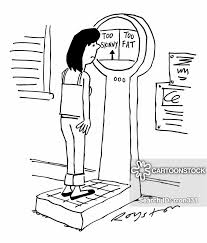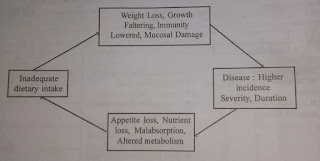As you all know the most searched topic throughout the web is “how to lose weight”. But some people are underweight and want to gain weight. According to the National Health and Nutrition Examination Survey (NHANES), it is estimated that 1.5% of U.S. adults aged 20 and over are underweight. Not necessarily underweight means that you are unhealthy, some people want to gain weight on muscles. Some people may be skinny and they want to gain weight to look healthier. I hope you all can get your answer through this article.
- Genetic predisposition: There is a familial tendency to be underweight if one has a family history of low BMI due to physical characteristics that run their family.
- Physical activity: It is natural to be underweight if you are a heavy worker or an athlete who tends to do high physical activity.
- Metabolic rate: If one has a high metabolic rate then they can't gain weight even after having high-calorie foods.
- Mother's health status: During pregnancy, if a mother is underweight or has a nutrition deficiency then the child will also be underweight.
- Poor selection of food: The main cause of underweight is a poor selection of food. Sometimes it may happen that we chose food that we like which is not healthy but high-calorie food. This doesn’t add energy to your body but causes many health problems. So it is necessary to choose the right food in the right amount.
What problems will you face if you are underweight?
- Having more chance of infection: If you are underweight then you will have a weak immune system as a result it will have very low resistance power towards diseases or infections. thus you will have more chances of infections.
- Growth faltering: your body needs plenty of nutrients to grow. Therefore if you have nutrient deficiency then your body will be unable to grow and to stay healthy.
- Bone tenderness: Bone tenderness is simply the thinning of bones due to deficiency of vitamin D, calcium, Phosphorus. This will reduce the strength of your bones and can lead to osteoporosis.
- Cardiovascular problems: Being underweight will cause irregular heartbeat and will have a higher risk of a heart attack.
- Infertility: In women underweight can be more dangerous. This can lead you to have irregular periods which will result in infertility. In fact, during pregnancy, if a mother is underweight then the child can be premature or it may cause the death of the child.
- Hair Loss: This is caused due to deficiency of protein, biotin, vitamin C, and iron.
Metabolic and clinical changes: When energy intake falls below the minimum requirements, the body responds with certain physiological adaptation like-
- Low protein synthesis
- The low metabolic rate of the body
- Reduced lean body mass (fat-free body mass)
- Reduced adipose tissue accumulation
- Changes in the body tissue compartment
- Inelastic skin
- General manifestation like Fatigue, Lethargy, and Breathlessness.
Dietary changes: To gain weight you can make some changes in your dietary intake. Your dietary intake should include high carbohydrate, protein, calorie, fat intake. This intake of nutrients should be gradual since the capacity to digest and absorb nutrients is reduced. The following general guidelines can be helpful for you.
- The total intake should be 500-1000 kcal above the daily need to result in a gain in weight by 1 kg/week. The calories should be increased gradually over a period of one or two weeks.
- The person should consume around 1.2 gm/kg of ideal body weight of proteins/day for tissue regeneration. A combination of both animal and plant proteins should be used.
- Fats can increase the energy value of the diet without adding bulk to it. About 30% of the calories should come from unsaturated sources. Fats should be added gradually.
- Liberal amounts of easy to digest carbohydrate should be included in the diet. About 65% of total calories should come from carbohydrates.
- Intake of dietary fiber should be minimized so that there is better absorption of nutrients.
- Fresh fruits and vegetables should be consumed to provide enough vitamins and minerals.
- Fluids should be taken after a meal instead of with meals or before meals so that the food intake should not be reduced.
I hope this is helpful to you and
if it does then follow me to get more such information follow me . And if you
have any doubt do let me know in the comment section below.




A good topic to choose. Many people are struggling to gain weight.
ReplyDelete